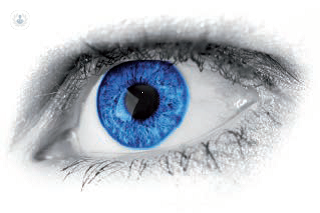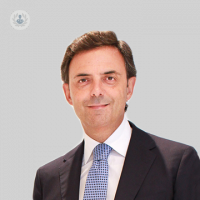Modern innovations in cataract surgery: intraocular lenses (IOLs) and the femtosecond laser
Written by:Cataracts affect millions of people, usually occurring as people get older. Top Doctors talks to Mr Vincenzo Maurino, who is recognised internationally as an expert in refractive cataract surgery, and using IOLs (intraocular lenses) to replace the affected natural lens. He has pioneered the use of femtosecond laser-assisted cataract surgery and multifocal lenses, and is regarded as an authority on this technique.
What are cataracts?
The natural crystalline lens of the eye focuses light onto the retina, allowing us to see and focus on things close to us. With ageing, this lens can become cloudy or opaque, impairing vision. This is called cataract formation. In some people this reduction in vision will not be serious, but for most people the cataract could severely affect their sight and their activities.
How do you treat cataracts?
When cataracts are causing sight problems, compromising one’s ability to drive, read or work, surgery is recommended. Cataract surgery involves replacing the natural lens with a synthetic replacement called an IOL (intraocular lens), which can also fix other vision problems, such as long or short-sightedness, presbyopia and astigmatism. Cataract surgery is the most common elective surgical procedure in the UK, with around one in three people over 65 requiring it.
What is an intraocular lens?
An intraocular lens is an artificial lens made of a plastic-like material, which is implanted to replace the natural lens of the eye. The original lens (now a cataract) is liquefied by means of high-frequency ultrasound (this process is called phacoemulsification), and then washed out of the eye. The IOL is then inserted through a small incision, and unfolds within the lens capsule. IOLs are unlikely to deteriorate, making them a permanent solution. There are two categories of IOL: monofocal and multifocal. Multifocal and monofocal IOLs can also correct astigmatisms and these are called toric IOLs.
Monofocal IOLs
While monofocal IOLs have proved successful, they only offer improved vision at a certain range – usually long-distance, meaning patients need glasses for short distance, e.g. for reading. Some patients have one eye fitted with a lens for seeing long distances, and the other for short-distance sight (micro-monovision), but still may need glasses for a few tasks and also may need to adapt to the difference between the two eyes.
Multifocal IOLs
Multifocal IOLs spread vision focus between short, middle and long distance, with the aim of reducing dependency on glasses. Although they offer a wider range of focus than monofocal IOLs, occasionally some patients experience light scatter problems, e.g. glare. Clinical trials on new multifocal IOLs continue to be carried out, and as a result, this technology is improving, and has a real potential to provide a replacement lens that leaves patients free from dependence on glasses in almost 90% of cases.
Innovative cataract surgery
The latest cataract surgical technique involves using a femtosecond laser. A “femtosecond” is one quadrillionth of a second, and the energy of the laser is released in a few hundred of these, over a diameter of a hundredth of a millimetre. This offers extreme precision in making delicate incisions in the eye tissue. This procedure is often referred to as “femtophako”, and is constantly monitored via high-resolution images of the cornea, iris and lens provided by Optical Coherence Tomography (OCT).
What to look out for
Cataracts are very common, and can be dealt with if diagnosed and treated properly. Some people’s lenses never deteriorate to the point where surgery is necessary. However, if you experience symptoms such as blurry vision, faded colours, haloes around light and trouble seeing at night, you should consult your doctor or a specialist, who will advise you on the best course of action.




